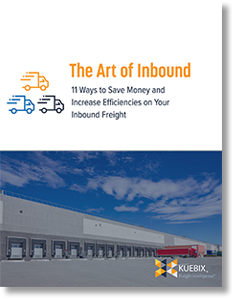Electronic Logging Device Mandate
On April 1st of this year, strict regulation of the electronic logging device (ELD) rule came into effect after a 3-month grace period.
The mandate requires the use of an ELD to automatically record a truck’s driving time to more accurately record a driver’s hours of service (HoS).
The Federal Motor Carrier Safety Administration states that the restricted Hours of Service (HoS) were put in place to combat an increased risk of crashes and chronic health conditions associated with lack of sleep.
This mandate, however, which is forcing immense changes for the industry, has been met with adversity.
Trucking companies are reporting that some truckers are even going so far as to leave the industry rather than use an ELD.
In the past, many drivers were concerned about the foul weather, accidents or long detention times because of the potential to miss their next delivery or a desire to return home.
Now, any form of unexpected delay could put that driver over his HoS and force him to stop for the night. This eats steadily into productivity and profit margins for drivers being paid by the trip.
With the new ELD mandate, there is no way for drivers to omit uncontrollable delays such as Acts of Nature from their logs which could put them over their HoS.
In the past, a shipper might have taken a 5-6 hour run, made a delivery, picked up a new load and then returned home. Now, that same driver would have to secure overnight parking to avoid violating the 11-hour daily driving limit.
These mandates serve to make the roads safer for all drivers but put additional pressure on an industry already strapped for capacity.
What else is causing the capacity crisis?
- The economy is requiring more trucks on the road as both e-commerce and brick-and-mortar stores’ sales continue to be strong
- Gen-Xers and Millennials are not filling trucking jobs vacated by Boomers at a fast-enough rate
- Inbound deliveries are often late due to congestion in the yard or at the dock
- Traffic, weather, and accidents on the road result in wasted, otherwise productive, time
The ELD mandate has put a spotlight on the HoS issue for the entire industry.
Already facing a capacity crisis, it is more important than ever that shippers maintain total control over their supply chains to ensure deliveries are made on time and any issues are dealt with as soon as they occur.
There is very little an individual shipper can do to encourage younger entrants into the job market to become truckers and, of course, nothing should be done to depress the flow of goods within the marketplace. Therefore, a shipper’s only option to effectively combat the capacity crisis is to streamline their own supply chain processes.
What can shippers do to minimize the effects of the ELD mandate?
- Reduce the number of inbound deliveries entering their facilities through consolidation
- Speed-up driver turn-around in their yards with dock scheduling and order management tools
- Communicate effectively with promise dates, notifications and issues as they arise
The ELD mandate is a new part of the shipping industry that will have a big impact on how freight is shipped. In order to comply with the regulations without being negatively impacted by HoS limitations, shippers should leverage the power of transportation technology to improve their operations.
With the help of a Transportation Management System (TMS), a shipper can identify the optimal carriers for their freight and hold those carriers to a high standard of execution.
In addition, a TMS can consolidate LTL freight into FTLs whenever possible. Time-slot appointments can be secured by leveraging a dock scheduling solution, reducing driver waiting times.
These improvements and many others can reduce the number of trucks on the road, saving money and speeding-up yard flow. Once a more streamlined operation is established, shippers can rest assured that their drivers will be set up for success.
Learn more about Kuebix’s TMS Dock Scheduler, Order and Route Optimizer, and other Premier Applications that help shippers become more efficient and minimize the impact of the ELD mandate.
Read: Calculating Less-than-Truckload Freight Rates, What Should You Be Paying?
Related White Papers & eBooks
The Art of the Inbound: 11 Ways to Improve Your Inbound Shipping Operations New!
This ebook provides a guide to benchmark your company against best practices in the transportation and shipping industry and helps to put together a strategic approach to capitalizing on the opportunities to manage the “art of the inbound.” Download Now!
The Complete Buyer’s Guide to Transportation Management Systems
There is almost no limit to how a Transportation Management System can benefit your unique supply chain, but the key to success is finding the right one for your goals, so, before selecting a TMS, use the 12 questions in this buyer’s guide to find the best solution for your company. Download Now!
Effectively Managing Big Data in Your Supply Chain
In this white paper, we’ll explain what the term “big data” means to the typical supply chain, introduce effective strategies for managing and leveraging that data, show how one grocer is using predictive analytics to harness its own big data, and explain the “first steps” that companies need to take down the path to effective management of their big data. Download Now!
More Resources from Kuebix
Article topics
Email Sign Up




















